
He stalks the Sherwood Forest of our imaginations, robbing from the rich to give to the poor, defending the defenseless, true to the lovely Maid Marian. It's safe to say the legend of Robin Hood of Nottingham lives on today
Robin Hood appears in Sir Walter Scott’s Ivanhoe as Locksley, where, clad in Lincoln green, he cleaves a willow wand with a well-aimed arrow, rescues prisoners and leads a troop of merry men. (Merry-men were followers of a knight or outlaw chief; it had nothing to do with their dispositions.)
In Scott’s version, he is loyal to King Richard, off nobly fighting the Third Crusade while his evil brother, John, rules England.
Read more: Did William Shakespeare really write Romeo and Juliet?
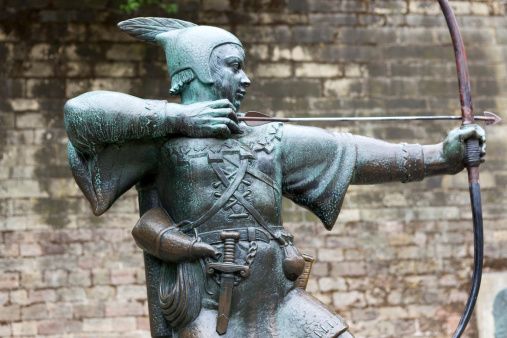
Robin Hood Statue
The legend of Robin Hood
He has been known as, or confused with, men named Robin, Robyn, Robert, Rabunhod, Robehod, Hood, Hude, Heud, Hoad, Hobbehod, Wood, Whoad and Whod. Instead of Richard, he may have defended the Earl of Lancaster, Simon de Montfort or any one of the first three King Edwards. He may have helped the Saxons revolt against their oppressive Norman overlords. In his earliest adventures, he was a yeoman of lowly birth, but was later promoted to an aristocrat defrauded of his lands.
His battles against an evil sheriff accomplished, he either reclaimed his ancestral lands or remained to romp and roister in Sherwood Forest. He may have lived (and died) in Nottingham, Berkshire, Leicestershire, Warwickshire or Yorkshire. His legend may have even originated, heaven forefend, in France. He may never have existed in real life; every census roll, court record or gravestone bearing his name and cited by one scholar is deemed spurious by another.
His earliest legends make no reference to his sharing his spoils with the needy, except that he seems to have given an old lady shoes and hose. It’s easy to believe that the sheriff was Robin’s perennial enemy, since the sheriff was the tax collector.
Read more: Does the Queen have secret hand signals?
Robin Hood in literature
Shakespeare mentioned him, Keats composed an ode to him, Tennyson put him on the stage, Mel Brooks made a funny sitcom about him. When you add Douglas Fairbanks, Errol Flynn, Richard Greene, Sean Connery, Russell Crowe and a Disney cartoon fox, the whole becomes a merry mess.
Before there were several men whose rousing good stories presaged his and with whom his legends have become entangled. One was Hereward the Wake, who led the English resistance to the Norman conquerors. He was an outlaw even before 1066. Disinherited by his father and King Edward the Confessor, he fought against the king, but may have reconciled with him later.
Another was Eustace the Monk, who abandoned the monastery to avenge his father’s death and lived as a forest outlaw until he took to piracy. Fulk Fitz Warin, a disinherited Shropshire baron, fought against King John, then reconciled with him, even as did (in some versions) Robin.
Eustace and Fulk lived in the forest as outlaws, like Robin. All three were disinherited, just like the Robin of some versions. Like Eustace, Robin had a go at piracy, in one ballad, at least. All four were great fighters, and all escaped traps by cunning and deceit while setting traps of their own and upholding justice and honor. They fought with the bow, sword and/or quarterstaff.
Other heroes also lent their presence to Robin’s legend. When it was time to gather around the fire and hear a new tale, there was no sheriff to prevent stealing parts of these earlier stories and making Robin Hood the protagonist, eventually adding a virtuous young lady, a buff monk, a bit of philanthropy and whatever weapons would make for a rousing good fight. Dating most of these stories is impossible.
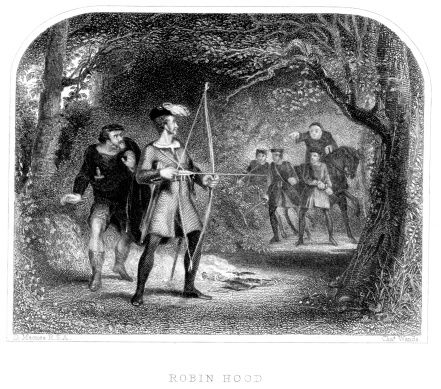
Vintage Robin Hood Engraving
Read more: Do we finally know who Jack the Ripper is?
Robin Hood and Nottingham
What better place to find the real Robin Hood than Nottingham? The city never misses an opportunity to keep his legend alive, including statues, plaques, themed walks, two annual festivals and an mp3 audio trail.
Even the history of England, laid out in simple style for young and old in the excellent Nottingham Castle and Art Museum, starts and ends with that rascal, Robin. This building is on the former seat of power for the evil sheriff, Robin’s arch enemy. But ask average town citizens if he existed, and the reply is usually a rueful shake of the head, as if they were asked to tell a small child the truth about Father Christmas.
So, I’m off to the Robin Hood Festival, held appropriately in the Sherwood Forest Country Park, where make-believe jesters, knights and rat-catchers play sackbuts and sell foam rubber broadswords.
Sir Walter Scott said of the famous woodland, “In that pleasant district of merry England which is watered by the River Don, there extended in ancient time a large forest, covering the greater part of the beautiful hills and valleys which lie between Sheffield and the pleasant town of Doncaster.”
Sherwood Forest, a royal hunting preserve, once reached all the way to Yorkshire. It was a “shire wood.” Now reduced to 1,045 acres from 100,000, the famous woodland is well managed by the Forestry Commission. Part of it is a public park, and another portion was named a Natural Nature Reserve. Home to varied wildlife and many ancient gnarled oaks, the most famous is the Major Oak, in whose branches Robin and his men were said to hide. It is accessed at the village of Edwinstowe, where Robin and Marian are alleged to have been married at St. Mary’s Church.

Sherwood forest
Read more: 5 Things to be aware of before you visit Britain
Tales of Nottingham
Nottingham is easily accessed by major motorways, East Midlands Trains, two airports and regular bus service. Trams run through the city.
Charles I raised his standard near Nottingham Castle in 1642 to start the Civil War. William the Conqueror built the first castle, since demolished and rebuilt, and its attractively landscaped grounds and museum can be toured. Caves, also accessible to tourists, were dug in the sandstone under the castle to provide storerooms, a tannery, homes and the like. Several walking tours of the town are offered, one conducted by Robin Hood himself.
There are pubs, teashops, hotels and restaurants everywhere. Have a drink or meal in Ye Olde Trip to Jerusalem, said to be the oldest pub in England, where crusaders met for one last pint before setting out. If you sit in a certain spot, perhaps you’ll feel a ghostly hand on your shoulder!
One of the highlights of the festival is the skirmish, in which Robin’s band defeats the dastardly Sheriff of Nottingham and his men in frighteningly realistic fashion. But even Robin himself, otherwise Steve Warrington, when asked if he is real, says with a twinkle in his blue eyes: “To the children I’m extremely real. We’re not re-enactors per se because we do follow the children’s version of history.”
Does it really matter? Everyone in every age needs a hero. Why not Robin Hood, who stands up to evil and helps the poor and helpless? The Nottingham Castle Museum sums it up this way: “What is important is what Robin Hood symbolizes to many people and how the stories evolved to suit the needs and aspirations of each generation through the centuries. Whatever you believe, Robin Hood is still alive in the minds of people all over the world, and to most, he’s a real hero.”
Read more: 8 Royal nicknames we bet you don't know





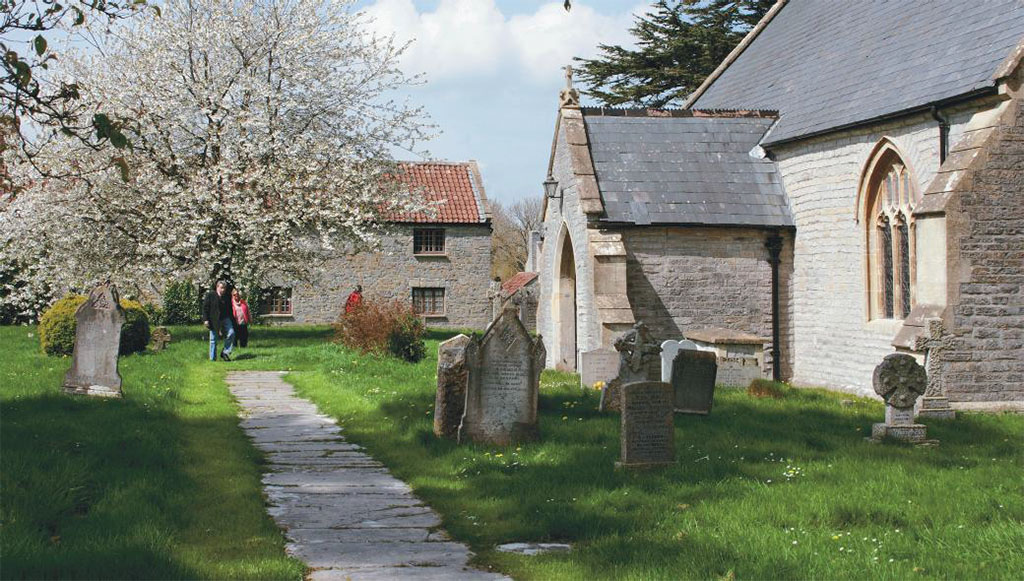

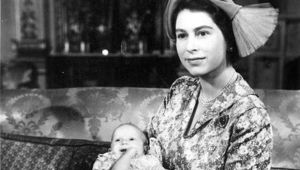
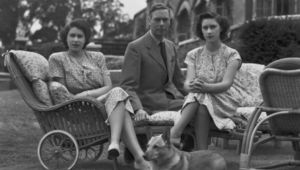
Comments